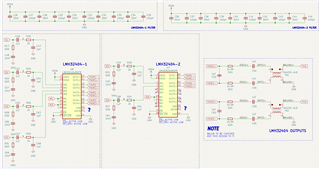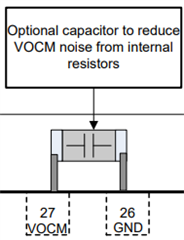Other Parts Discussed in Thread: INA597, LMH34400
Hi, I am working on a small wearable project and I want to use two LMH32404 as 6 channel amplifier. I have 3 questions
1- Can the amplifier's filter be reduced? Since it is a very small device I want to create more space if possible :D
2- What smaller components can be used instead of "baluns" to turn signal to single ended?
3-Do these "baluns" required at every output of the amplifier or can I just use 1 balun aftter the amplifier and before the next electronic block?
Thank you for your answers.




